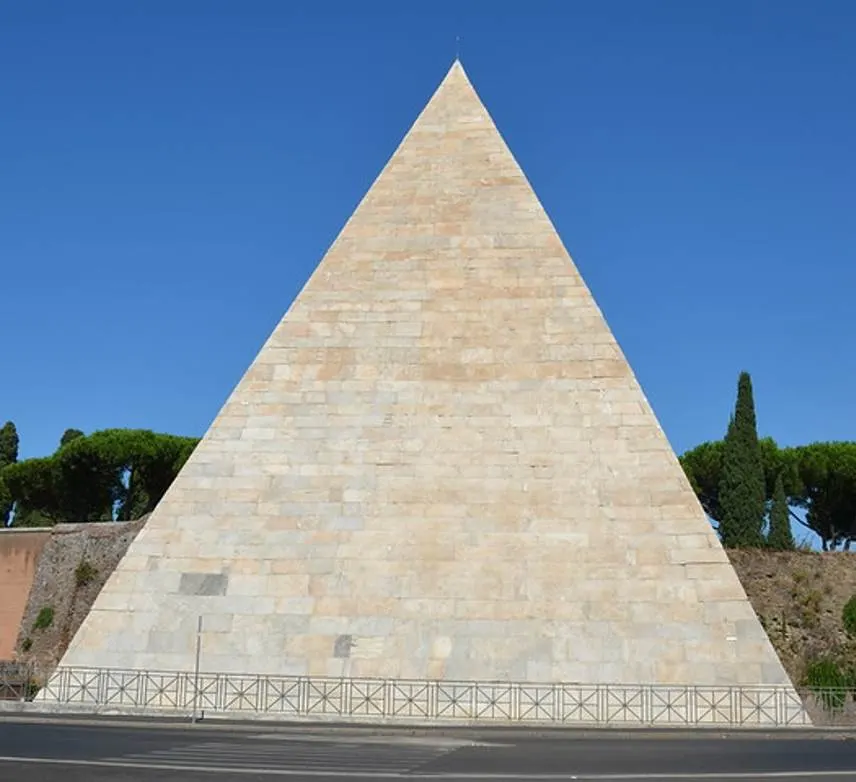The moment you hear the word “pyramid,” visions of huge structures dominating the Egyptian desert landscape come to mind, right?
Even though we associate pyramids with ancient Egypt, they have been built by numerous civilizations all around the world.
Some include the pyramids at Chichen Itza in modern-day Mexico, and more recently the Transamerica Pyramid in San Francisco and the Louvre Pyramid in Paris.
What you don’t really expect is to see an ancient pyramid standing in the middle of a bustling modern-day city.
Let’s take a closer look at some of the most interesting facts about the Pyramid of Cestius, an ancient structure that fits this description.
1. It’s located near the southern gate of the city of Rome
The Pyramid of Cestius is one of the most surprising structures you’ll come across if you plan to visit Rome, Italy’s capitaL
You might not even believe it initially, but this is actually a pyramid that dates back to antiquity.
It’s located next to another ancient structure called the Porta San Paolo, one of the gates in the southern part of the city.
The two cylindrical towers of the gate were built during the 6th century and it was originally referred to as the “Porta Ostiense.”

This was a reference to the “Via Ostiense,” a major road that connected Ostia, the location of the ancient port of the city, and the center of Rome.
This also means that both structures are located in the Ostiense district of the city today, just south of the historical heart.
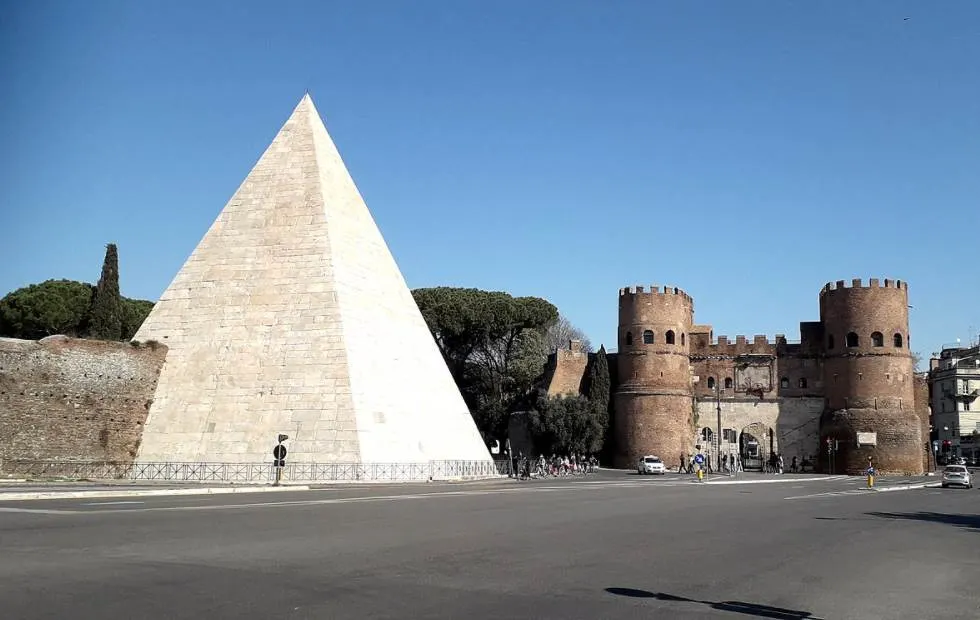
2. It was built by a wealthy Roman in the second decade B.C.
Just like the pyramids of ancient Egypt, this Roman structure was built to serve as a tomb.
The difference between Rome and ancient Egypt is quite clear. Projects like this weren’t just reserved for the emperor (pharaoh in Egypt), but just about anybody who did quite well in society.
The project was commissioned by Gaius Cestius Epulo, a magistrate and member of the “Septemviri Epulonum,” a religious corporation in ancient Rome.
This enterprise was in charge of arranging feasts, banquets, and the infamous games referred to as “ludi.”
This means that the man had quite some spare cash to fund this project which is believed to have been completed between 18 and 12 B.C.
Yes, this was during the reign of Rome’s first emperor Augustus, quite a while ago.
3. It’s much bigger than it initially appears to be
Even though it doesn’t appear to be that big initially, the structure is actually huge.
Just like Egyptian pyramids, it has a square base. This has a diameter of 29.6 meters (97 feet), which was the equivalent of 100 Roman feet.
It’s also much taller than it looks like because it reaches a height of 37 meters (121 feet), the equivalent of 125 Roman feet.

4. It has been very well-preserved for a particular reason
The first thing you’ll notice when coming across this remarkable structure is that there’s an old, dilapidated wall hanging onto it.
This is actually part of the Aurelian Walls of the ancient city of Rome. These walls were built between 271 and 275 A.D. during the reign of Roman Emperors Aurelian and Probus.
This enormous wall complex enclosed just about all of Rome, including its 7 historic hills and the Campus Martius. That was an area of about 1,400 hectares (3,500 acres), quite huge indeed!
This pyramid was incorporated into these walls, just like many other similar structures that were repurposed to both save money and time.
5. The interior of the Pyramid of Cestius features an empty tomb
So how does the interior of the Pyramid of Cestius look like?
Just like the tombs of the pyramids in Egypt, not spectacular. The interior is simply a barrel-vaulted rectangular space that only served a purpose as being a burial chamber.
It’s also pretty small with dimensions of 5.95 by 4.1 meters (19.5 by 13.5 feet) and a height of 4.8 meters (15.7 feet).
Apart from some faded frescoes that decorated the walls of this chamber, it was also empty when it was first opened in 1660. This means that the contents had been robbed in antiquity.
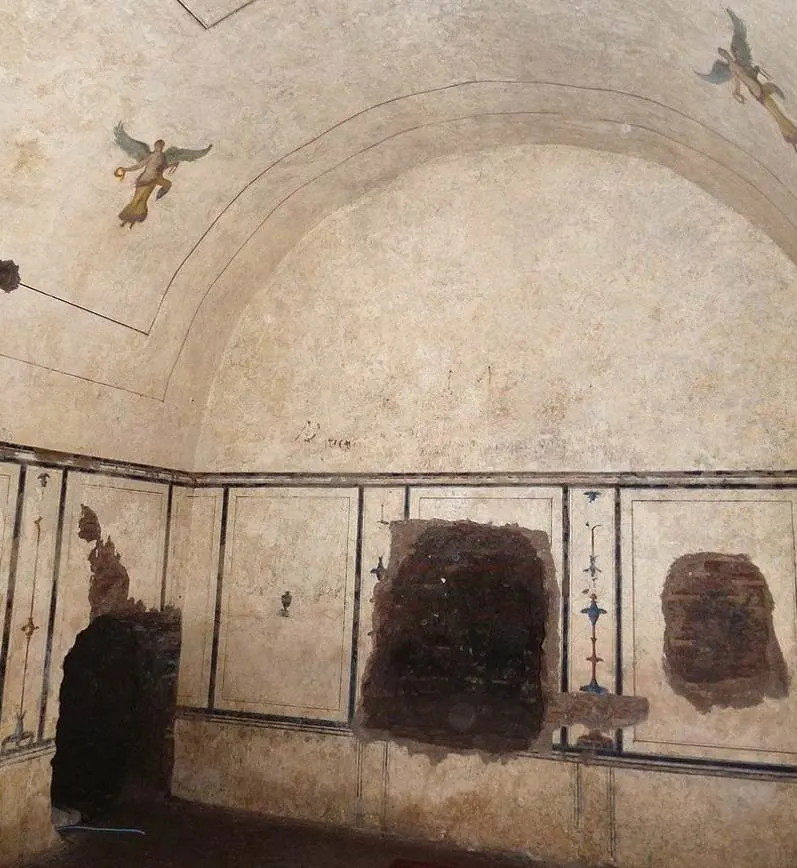
More interesting facts about the Pyramid of Cestius
6. The official title of the man who built the pyramid was “praetor.” This means he was an appointed magistrate by the government in ancient Rome.
His other function, the one that probably made him very rich, was that of “Septemviri Epulonum,” which means he was one of the leaders organizing the games in the city. Epulones literally translates from Latin to “feasters.”
A mention of these things was inscribed into the flanks of the pyramids which reads:
C · CESTIVS · L · F · POB · EPVLO · PR · TR · PL
VII · VIR · EPVLONVM
This translates to: “Gaius Cestius, son of Lucius, of the Pobilia, member of the College of Epulones, praetor, tribune of the plebs, septemvir of the Epulones.
7. The pyramid was built on a concrete foundation and the core structure consists of bricks. This was then clad with white Luni marble that gives the pyramid its distinctive white color.
Remarkably, this is also how the pyramids of ancient Egypt looked before they were stripped of their white limestone cladding.
8. Even though the pyramid looks bright and shiny today, this wasn’t the case anymore in the early 2000s.
A project was started in 2011 to completely clean the pyramid and return it to its former glory. The difference is quite amazing.
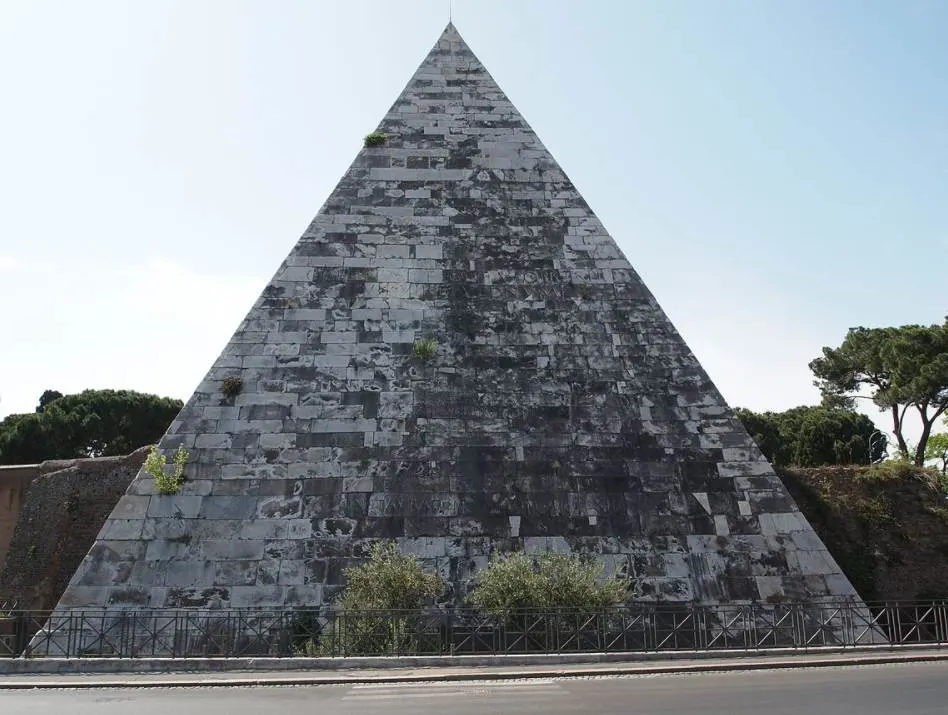
9. Because the pyramid was built during the reign of Augustus, the first Roman Emperor, it would have been located well outside the city of Rome, probably in an open field. After all, tombs were forbidden inside the city.
By the time that the Aurelian Walls were built, the city had expanded so much that it was already surrounded by buildings. Some remains of the columns and additional tombs that were built near the pyramid can still be seen today.

10. The scale on which the Aurelian Walls were built can be seen in the section that is still attached to this ancient pyramid.
They didn’t build it for anything as well during the early 270s. The city was under constant threat of Barbarian invasions, including a massive-scale attack in the year 270 A.D.
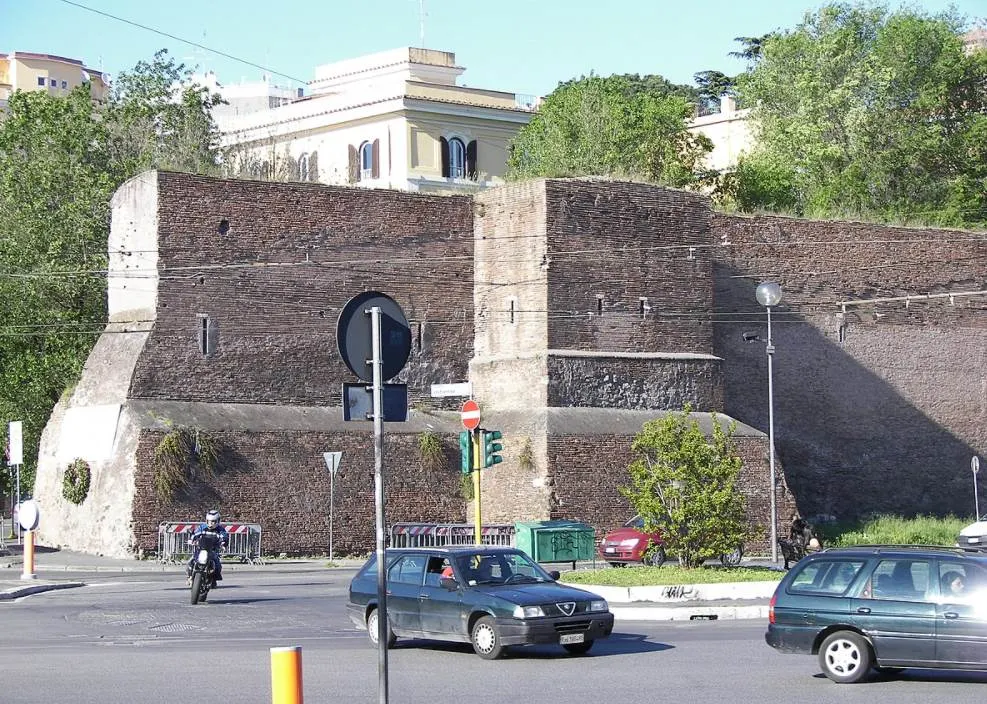
11. This pyramid is one of just two pyramids that were ever built in ancient Rome and the only surviving one. The other was referred to as the “Pyramid of Romelus” or “Meta Romuli” and stood somewhere near the Mausoleum of Hadrian.
Even though it was completely dismantled in the 16th century by Pope Alexander VI, its remains still serve a purpose today. The marble slabs of the pyramid were used to build the steps of St. Peter’s Basilica in Vatican City.
12. Even though we are certain about the true original purpose of the pyramid today, this wasn’t always clear throughout its history.
During the Middle Ages, for example, it was believed to be the tomb of Remus. The other pyramid was assumed to be the tomb of Romelus, his twin brother who is considered to be the founder of Rome after killing Remus.
